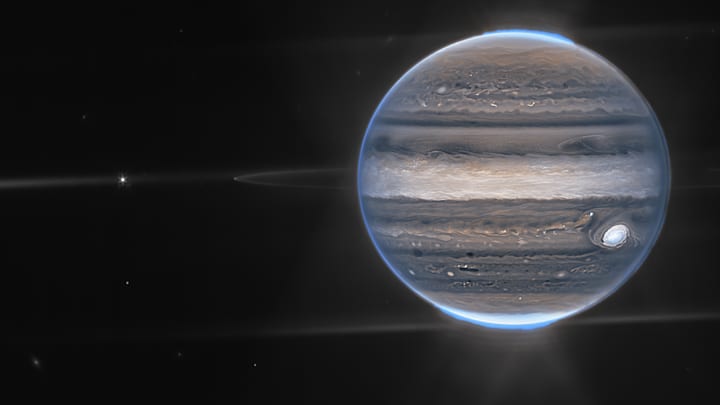On July 12, NASA dazzled the world with clear images of nebulae, galaxy clusters, and dying stars from the James Webb Space Telescope. That first batch of pictures marked the start of the agency's mission to document the depths of space in greater detail than ever before. In addition to capturing spectacles millions of light years away, the advanced telescope can also show us planets in our own solar system from a fresh perspective.
NASA created this new composite image of Jupiter with data recorded by the James Webb Space Telescope. Using its near-infrared camera, the instrument can pick up radiation the human eye doesn't perceive. These undetectable lightwaves are interpreted here as colors on the visible spectrum, with the longest wavelengths showing up more red and the shortest waves coming closer to blue.

The telescope captured our solar system's largest planet—including its satellites and tumultuous atmosphere—as we've never seen it. Jupiter's auroras can be seen as waves of color capping its northern and southern poles. The Category 12 hurricane known as the Great Red Spot is depicted as white here due to the amount of sunlight reflected by the high-altitude clouds. The wide-field look at the planet (at the top of the article) fits its small moons Amalthea and Adrastea and faint rings into the image.
Currently orbiting roughly 1 million miles away from Earth, the James Webb Space Telescope can see far beyond our planetary neighborhood. With a 6.5-meter-wide mirror that catches seven times more light than the Hubble Space Telescope, it can capture images that have been hurtling through space for billions of years, which may tell us more about the origins of the universe. But when Webb isn't peering into the deepest reaches of space and time, it will provide fresh views of the planets we know best.
